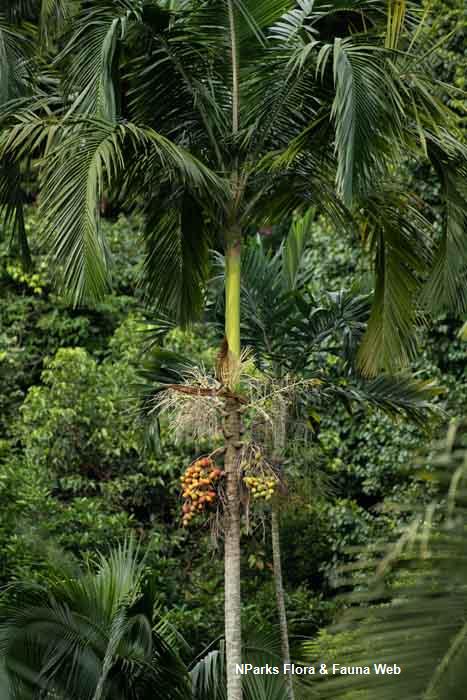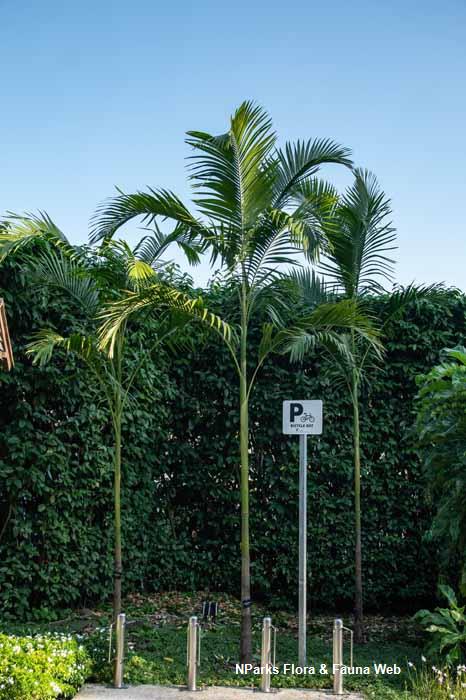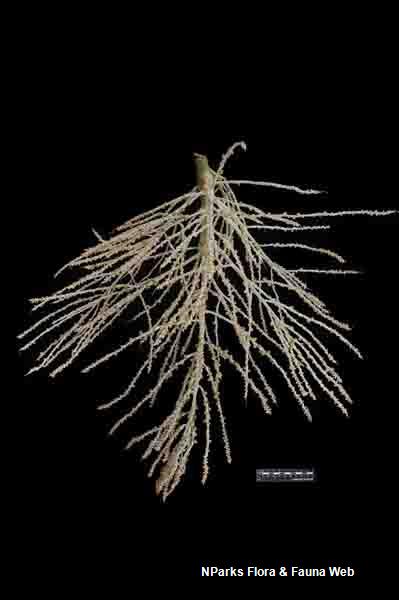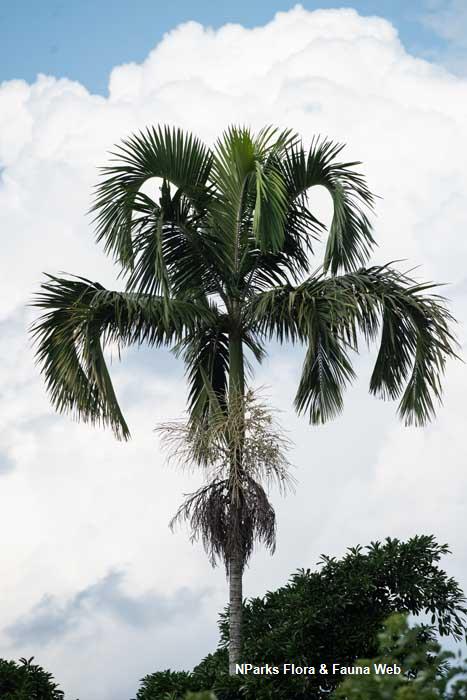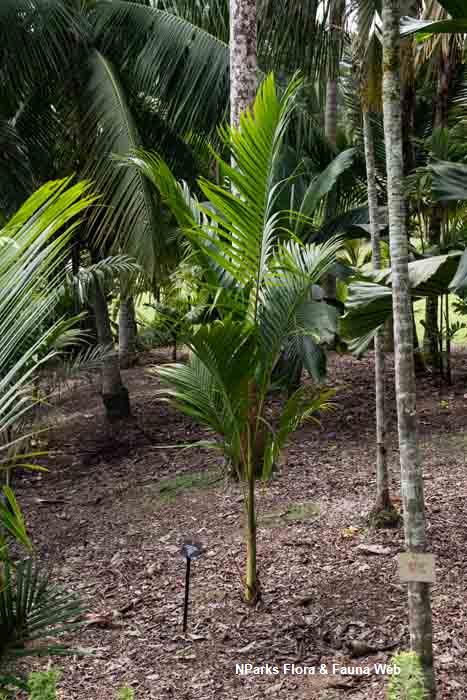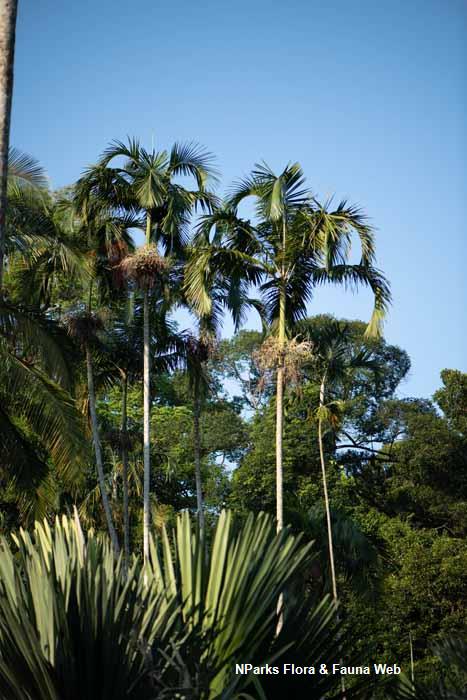
Back
Actinorhytis calapparia
| Family Name: | Arecaceae (Palmae) |
| Synonyms: | Seaforthia calapparia, Areca calappari, Actinorhytis poamau |
| Common Name: | Pinang Penawar, Calappa Palm, Actinorhytis, Tañgalo, Mak-prao |
Name
Classifications and Characteristics
| Plant Division | Angiosperms (Flowering Seed Plants) (Monocotyledon) |
|---|---|
| Plant Growth Form | Palm (Solitary Habit) |
| Mode of Nutrition | Autotrophic |
Biogeography
| Native Distribution | New Guinea and the Solomon Islands |
|---|---|
| Native Habitat | Terrestrial |
| Preferred Climate Zone | Tropical |
Description and Ethnobotany
| Growth Form | It is a tall solitary palm, up to 15m tall. Trunk is marked with leaf scars and presence of a large cluster of roots at the base. |
|---|---|
| Foliage | Leaf is large (2.1 – 3m long), strongly arching and comprises of many regularly arranged leaflets (about 45 cm long). Upper surface of the mid rib is covered with both small dot-like scales and thin elongated scales with ragged margin. Crown sheath is slender, and have scattered scales which falls off early. Petiole is long when young, and becoming shorter as the plant matures. |
| Flowers | Inflorescence is highly branched and consist of both male and female flowers (monoecious). Male flowers are asymmetrical in bud. Female flowers are globular, much larger than male flowers at maturity. |
| Fruit | Fruit is large (about 6 cm long), oval shaped, and smooth. Fruit turns from green to red when ripe, with persistent perianth. Seed is globose with deeply ruminate endosperm. |
| Habitat | It grows in lowland rainforest up to 1000m altitude. |
| Cultivation | It is a water loving palm which cannot withstand drought. It is propagated by seeds. |
| Etymology | Greek Aktis, ray; Greek rhytis, wrinkle or fold, which refers to the ruminations in the endosperm. |
| Ethnobotanical Uses | Others: The seed may be chewed as a betel substitute. Seed kernel were reportedly pounded and used as baby powder. Fruit is sometimes used in a lotion to treat scurf. |
Landscaping Features
| Landscape Uses | Parks & Gardens |
|---|
Plant Care and Propagation
| Light Preference | Full Sun |
|---|---|
| Water Preference | Moderate Water |
| Plant Growth Rate | Fast |
| Rootzone Tolerance | Well-Drained Soils |
| Propagation Method | Seed |
Foliar
| Mature Foliage Colour(s) | Green |
|---|---|
| Foliar Shape(s) | Palm Fronds |
References
| References | Dransfield, J., Uhi, N.W., Asmussen, C.B., Baker, W.J., Harley, M.M. & Lewis, C.E. . 2008. Genera Palmarum. The Evolution and Classification of Palms. . United Kingdom: Kew Publishing. 732 Riffle, R.L., Craft, P. & Zona, S. . 2012. The Encyclopedia of cultivated palms. London: Timber Press. 517 |
|---|
Image Repository
Others
| Master ID | 1967 |
|---|---|
| Species ID | 3259 |
| Flora Disclaimer | The information in this website has been compiled from reliable sources, such as reference works on medicinal plants. It is not a substitute for medical advice or treatment and NParks does not purport to provide any medical advice. Readers should always consult his/her physician before using or consuming a plant for medicinal purposes. |




